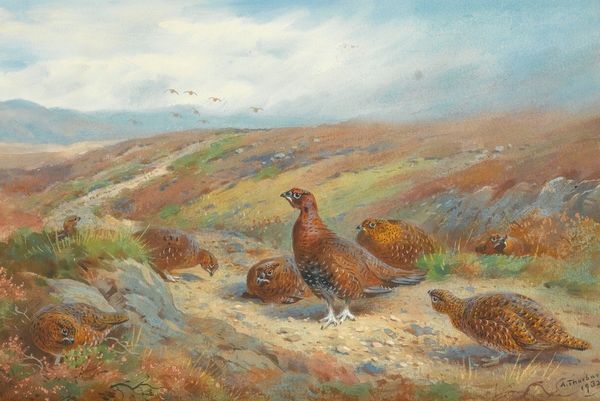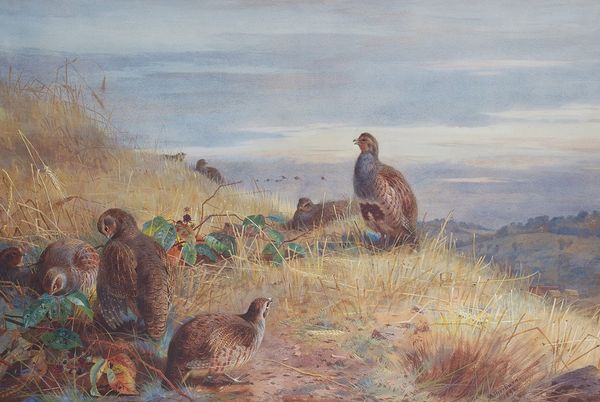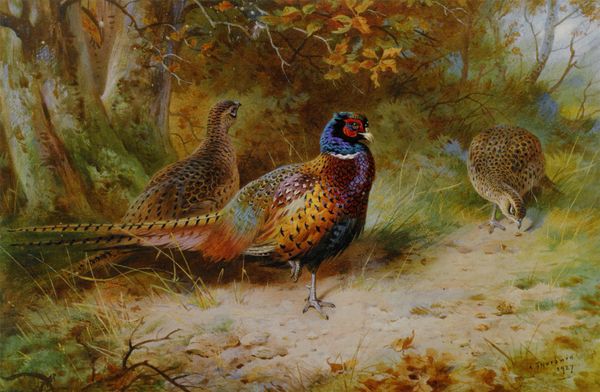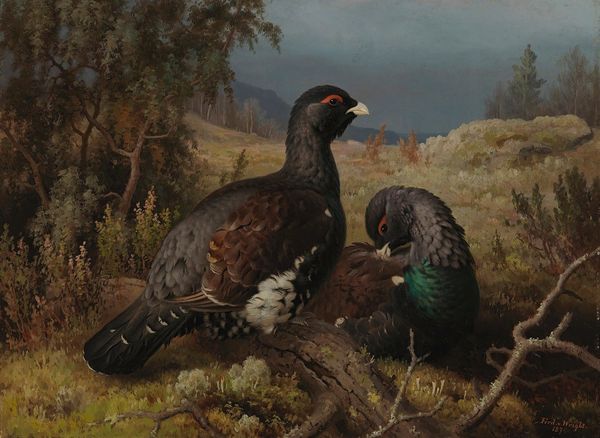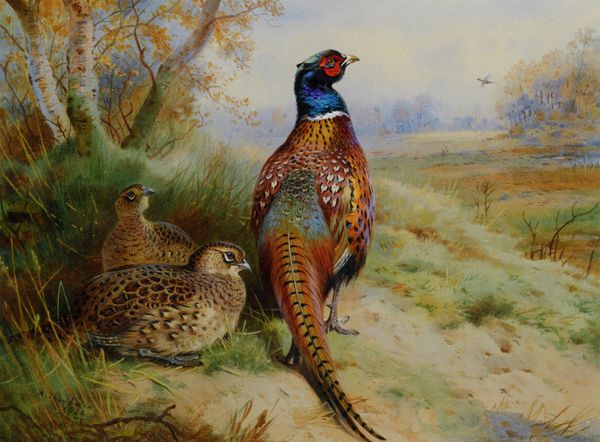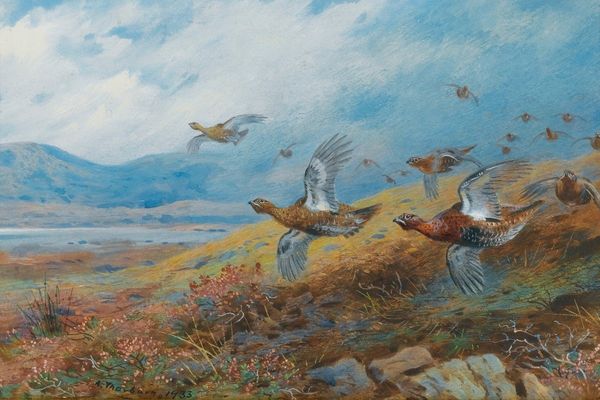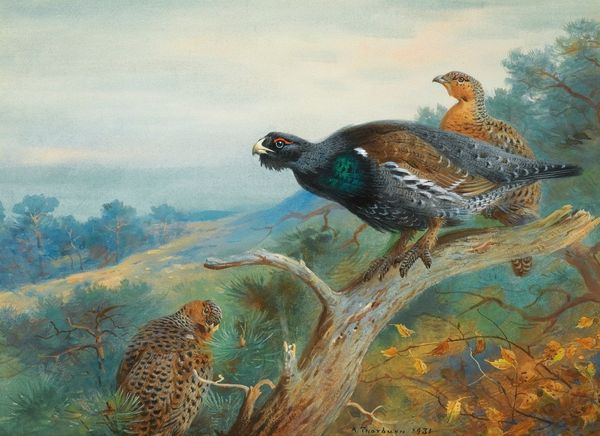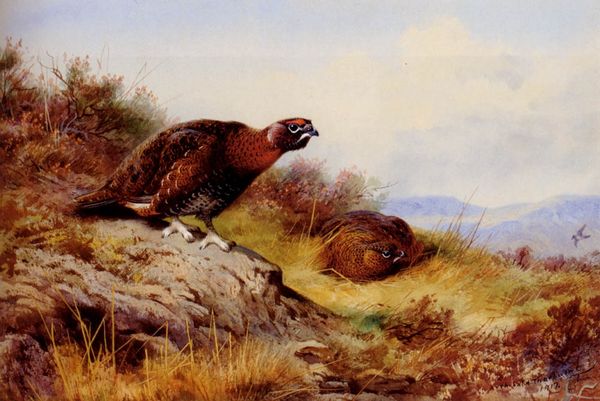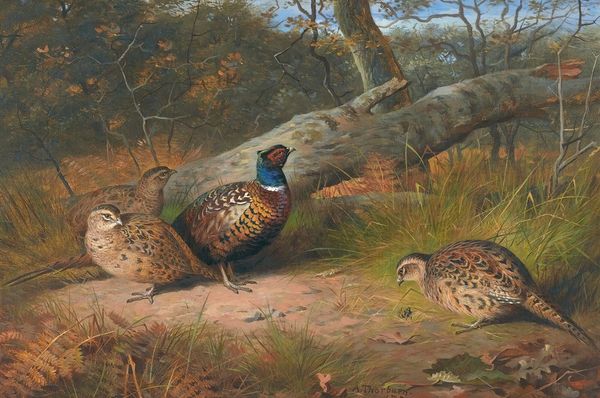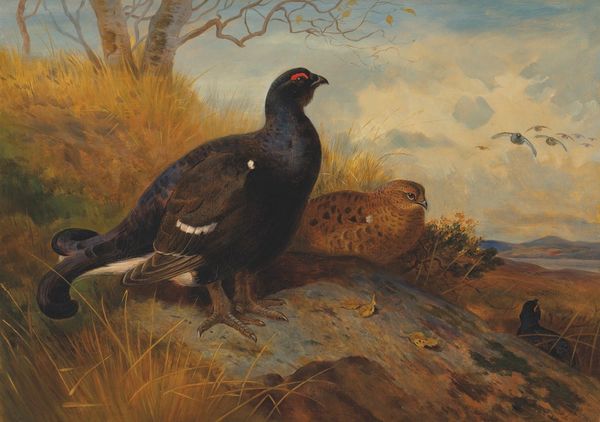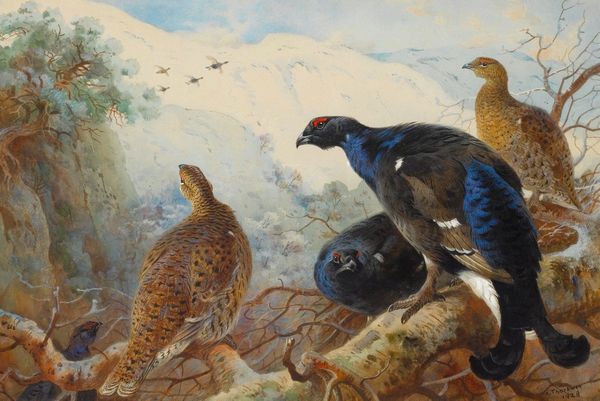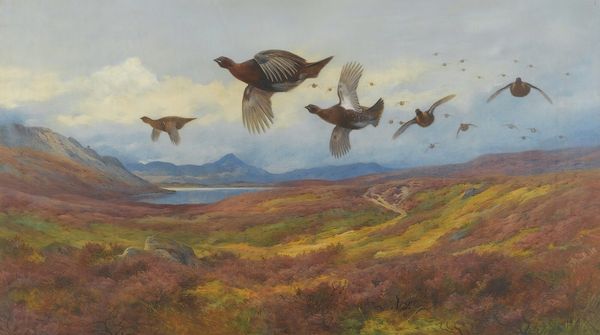
painting, watercolor
#
painting
#
landscape
#
figuration
#
oil painting
#
watercolor
#
watercolour illustration
#
watercolor
#
realism
Dimensions: 22 x 38 cm
Copyright: Public domain
Editor: Here we have Archibald Thorburn's "Red Grouse Packing," a watercolor and oil painting from 1927. There’s something very serene and… well, 'natural' about it, watching these birds on their landscape. What strikes you about this piece? Curator: What immediately captures my attention is the interplay of material reality and idealized representation. It’s crucial to acknowledge the labor involved in creating the paper, sourcing the pigments – both would have been very class-linked commodities in 1927. Do you think the detailed depiction of the grouse, almost scientifically accurate, serves to elevate them or, conversely, to emphasize their status as resources, potentially for hunting? Editor: That's a great point, their accuracy gives it almost like a wildlife reference, instead of being “art.” Thinking about it as labour, do you think Thorburn would have been trying to show off his skill, or would there be another social angle in how that technique displays its skill? Curator: I suspect both are at play. The very act of rendering these birds so meticulously in watercolor and oil signals a level of artistic skill meant to impress. However, we shouldn't overlook the social context: this kind of sporting art was often commissioned by landowners, essentially celebrating their ownership and control over the land and its resources, even celebrating a certain amount of “management”. Editor: So the material choices and detailed work might subtly be promoting a specific view of land and hunting back then? Curator: Precisely. It makes us consider who gets to look, and whose perspective is validated. Consider, too, that landscapes themselves can be considered material products; and question which class divisions become most obvious through their production and distribution. Editor: It's interesting to think how a seemingly simple painting can unpack complex ideas around class and control over nature’s resources. Thanks, I didn’t realize those social structures would also leave marks on what tools you can afford to tell your story. Curator: Absolutely. Recognizing these elements enhances our appreciation. We've managed to go deeper and contextualize what may at first appear to be just a tranquil rural scene.
Comments
No comments
Be the first to comment and join the conversation on the ultimate creative platform.
